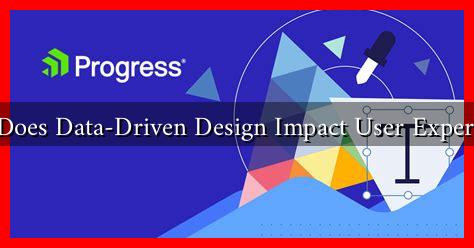-
Table of Contents
- How Does Data-Driven Design Impact User Experience?
- The Essence of Data-Driven Design
- Benefits of Data-Driven Design
- Case Studies: Success Stories in Data-Driven Design
- 1. Airbnb
- 2. Spotify
- Statistics Highlighting the Impact of Data-Driven Design
- Challenges in Implementing Data-Driven Design
- Conclusion
How Does Data-Driven Design Impact User Experience?
In today’s digital landscape, the importance of user experience (UX) cannot be overstated. As businesses strive to create products that resonate with their users, data-driven design has emerged as a pivotal approach. By leveraging data analytics, designers can make informed decisions that enhance user satisfaction and engagement. This article explores how data-driven design impacts user experience, supported by relevant examples and statistics.
The Essence of Data-Driven Design
Data-driven design refers to the practice of using data analytics to inform design decisions. This approach allows designers to understand user behavior, preferences, and pain points, leading to more effective and user-centric designs. The essence of data-driven design lies in its ability to transform subjective opinions into objective insights.
Benefits of Data-Driven Design
Implementing data-driven design offers several advantages that significantly enhance user experience:
- Informed Decision-Making: Designers can base their choices on actual user data rather than assumptions, leading to more effective solutions.
- Personalization: Data allows for tailored experiences, ensuring that users receive content and features that meet their specific needs.
- Continuous Improvement: By analyzing user feedback and behavior, designers can iteratively improve products, adapting to changing user expectations.
- Reduced Risk: Data-driven design minimizes the risk of design failures by validating concepts before full-scale implementation.
Case Studies: Success Stories in Data-Driven Design
Several companies have successfully implemented data-driven design principles, leading to remarkable improvements in user experience:
1. Airbnb
Airbnb utilizes data analytics to enhance its platform continuously. By analyzing user interactions, the company identified that users often struggled with the search functionality. In response, they redesigned the search interface based on user behavior data, resulting in a 30% increase in bookings. This case exemplifies how data can directly influence design decisions to improve user experience.
2. Spotify
Spotify employs data-driven design to personalize user experiences through curated playlists and recommendations. By analyzing listening habits, the platform creates tailored content that resonates with individual users. According to Spotify, personalized playlists account for over 30% of total listening time, showcasing the power of data in enhancing user engagement.
Statistics Highlighting the Impact of Data-Driven Design
Several studies underscore the significance of data-driven design in improving user experience:
- A study by McKinsey found that companies that adopt data-driven decision-making are 23 times more likely to acquire customers, 6 times more likely to retain customers, and 19 times more likely to be profitable.
- According to a report by Forrester, businesses that prioritize user experience can see a return on investment of up to 100%.
- Research from Adobe indicates that organizations with a strong focus on data-driven design are 5 times more likely to make faster decisions than their competitors.
Challenges in Implementing Data-Driven Design
While the benefits of data-driven design are clear, there are challenges that organizations may face:
- Data Overload: With vast amounts of data available, it can be overwhelming to identify which metrics are most relevant.
- Integration Issues: Combining data from various sources can be complex and may require advanced tools and expertise.
- User Privacy Concerns: Collecting and analyzing user data raises ethical considerations regarding privacy and consent.
Conclusion
Data-driven design is revolutionizing the way businesses approach user experience. By leveraging data analytics, organizations can make informed design decisions that lead to enhanced user satisfaction and engagement. The success stories of companies like Airbnb and Spotify illustrate the tangible benefits of this approach. However, challenges such as data overload and privacy concerns must be navigated carefully. Ultimately, embracing data-driven design is not just a trend; it is a necessity for businesses aiming to thrive in a competitive digital landscape.
For further reading on the impact of data-driven design, you can explore resources from Forrester Research and McKinsey Digital.

